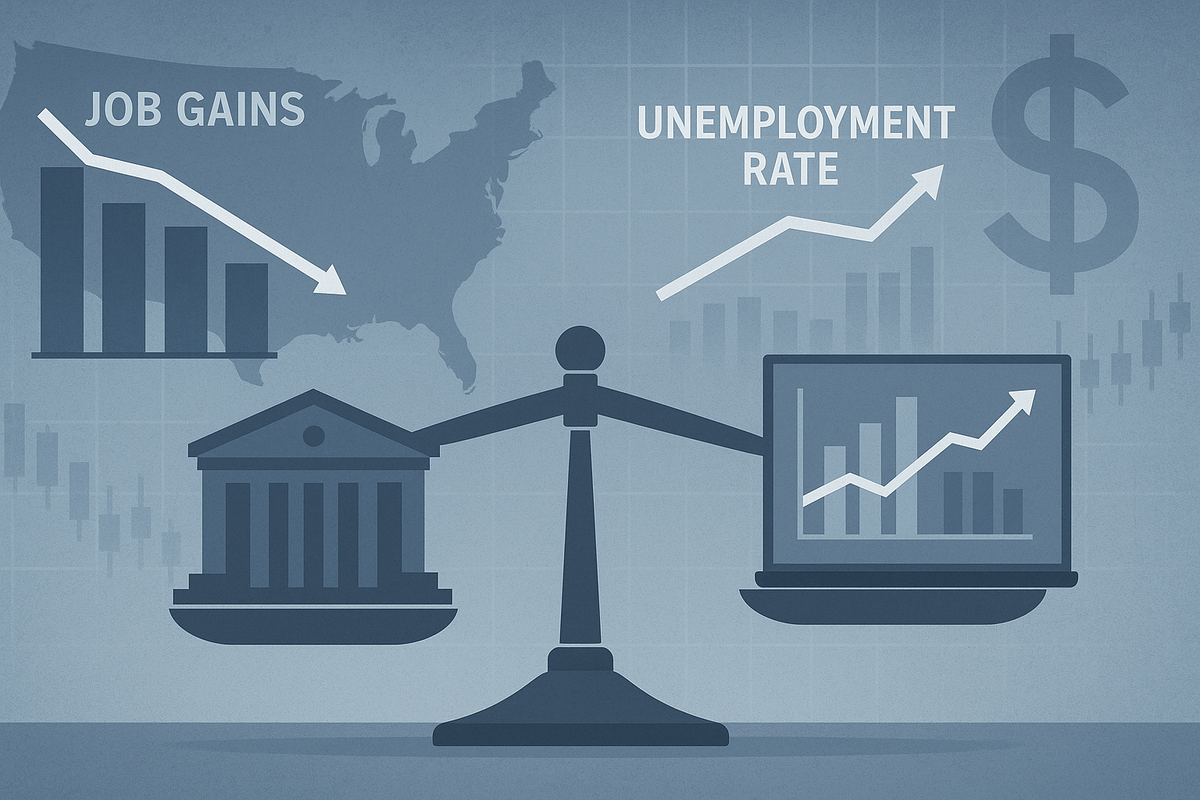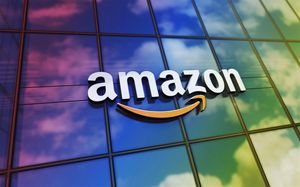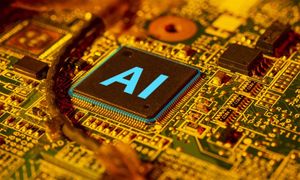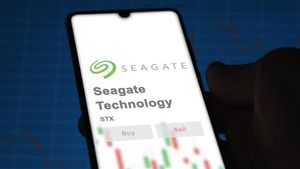
The U.S. labor market is exhibiting clear signs of a significant slowdown, marked by three consecutive months of substantially weak job additions and a slight uptick in the unemployment rate. This emerging trend has immediate and profound implications for the overall health of the U.S. economy and is poised to heavily influence the Federal Reserve's monetary policy decisions in the coming months. The deceleration in job growth, particularly the lowest average pace since the onset of the COVID-19 pandemic, is raising concerns among economists about a potential broader economic slowdown and its ripple effects on consumer spending and business confidence.
This softening labor market presents a critical juncture for policymakers. While the second quarter of 2025 saw robust GDP growth, the weakening employment picture creates a complex and somewhat contradictory economic landscape. The Federal Reserve, already grappling with inflation still above its 2% target, now faces the delicate balancing act of managing price stability without inadvertently pushing the economy into a deeper downturn. The pressure for potential interest rate cuts is mounting, as the central bank weighs the need to stimulate economic activity against the risk of reigniting inflationary pressures.
A Cooling Engine: Understanding the Labor Market's Recent Shift
The U.S. labor market has undeniably entered a period of significant cooling, a stark contrast to the robust job growth witnessed in previous years. The most recent data paints a clear picture of this deceleration, with July 2025 seeing a modest increase of only 73,000 nonfarm payroll jobs, falling short of economists' expectations. This figure, while seemingly small, becomes more concerning when viewed in the context of substantial downward revisions to previous months' data.
Specifically, June's initial estimate of 147,000 new jobs was sharply revised down to a mere 14,000, while May's gains were similarly slashed from 144,000 to 19,000. These revisions collectively mean that employment in May and June was 258,000 lower than initially reported, indicating a more rapid and pronounced cooling of the labor market than previously understood. The average monthly job gain for the past three months (May, June, and July 2025) now stands at a paltry 35,000, marking the weakest pace since the initial shock of the COVID-19 pandemic. While some sectors, such as healthcare and social assistance, continued to add jobs, other major industries, including manufacturing, retail, and construction, experienced job cuts in July. Federal government employment also continued its decline.
This slowdown has also manifested in the unemployment rate, which edged up to 4.2 percent in July 2025 from 4.1 percent in June. While still historically low, this slight increase, coupled with the significant slowdown in job creation, suggests a rebalancing of the labor market. Key players and stakeholders involved in this shift include the Federal Reserve, which closely monitors these figures for monetary policy decisions; businesses, which are adjusting their hiring and investment strategies; and American households, whose financial well-being is directly tied to employment opportunities. Initial market reactions have been mixed, with some investors viewing the softening labor market as a sign that the Federal Reserve may be compelled to cut interest rates sooner, potentially boosting equity markets, while others express concern over the broader economic implications of a sustained slowdown.
Navigating the Downturn: Winners and Losers in a Softening Labor Market
A softening U.S. labor market, characterized by fewer job openings, slower hiring, and a gradual rise in unemployment, creates a complex landscape of challenges and opportunities for public companies across various sectors. While it signals a broader economic slowdown and potential reduction in consumer spending, it also offers the prospect of alleviating wage pressures and potentially leading to lower interest rates.
In the technology sector, companies heavily invested in automation and artificial intelligence (AI) are poised to emerge as potential winners. Firms like NVIDIA (NASDAQ: NVDA) and Microsoft (NASDAQ: MSFT), which develop or extensively utilize AI tools, can further reduce their reliance on human labor, optimize processes, and achieve significant cost savings. Software companies providing enterprise solutions for efficiency also stand to benefit. Conversely, tech firms with high labor costs and less automation, particularly those reliant on large workforces for routine tasks, may face continued pressure on margins. Startups and smaller tech firms, often with less financial flexibility, could struggle to attract funding in a tighter credit environment.
The retail sector will see a clear divide. Discount retailers and essential goods providers like Walmart (NYSE: WMT) and Costco Wholesale Corporation (NASDAQ: COST) are likely to be more resilient. Consumers, facing economic uncertainty, tend to prioritize necessities and seek out lower prices, benefiting these value-oriented businesses. E-commerce platforms with robust logistics, such as Amazon.com, Inc. (NASDAQ: AMZN), may also continue to gain market share as price-sensitive consumers increasingly turn to digital channels. On the losing side are luxury and discretionary retailers, whose sales are highly vulnerable to reduced consumer spending. Brick-and-mortar retailers with high overheads and large sales forces may also face increased pressure on profit margins if sales decline.
In manufacturing, companies that have heavily invested in automation and robotics are better positioned to weather the storm. These firms can reduce their reliance on a large human workforce, mitigating the impact of wage pressures and potentially increasing productivity. Manufacturers of essential goods or industrial components may also see more stable demand. However, labor-intensive manufacturers and those producing cyclical goods, such as automotive or construction materials, are likely to experience significant declines in new orders and sales as consumer confidence wanes.
The financial services sector faces a dual impact. On one hand, a softening labor market could alleviate the wage inflation pressures that the industry has faced due to past labor shortages. On the other hand, it signals a potential economic slowdown, which could lead to reduced loan demand, higher loan defaults, and decreased asset values, impacting profitability. Banks with strong deposit bases and diversified revenue streams, such as JPMorgan Chase & Co. (NYSE: JPM), may be more resilient. If the Federal Reserve cuts rates in response to the softening labor market, certain financial services companies involved in mortgage lending or investment banking could see increased activity. However, lenders with significant exposure to consumer credit risk could see an increase in defaults if unemployment rises. Investment banks and brokerages may also see reduced demand for capital market activities.
Broader Implications: Industry Shifts and Policy Crossroads
The current softening of the U.S. labor market is not an isolated event but rather fits into broader industry trends and carries significant wider implications. This slowdown suggests a potential rebalancing after years of tight labor conditions and rapid hiring, particularly in the wake of the pandemic. It could signify a shift from an employer-driven market to one where employees have less leverage, potentially leading to a moderation in wage growth across various sectors.
The ripple effects on competitors and partners are substantial. Businesses that have struggled with high labor costs and intense competition for talent may find some relief, potentially improving their profit margins. However, for companies heavily reliant on consumer spending, a weakening job market translates directly into reduced demand, forcing them to re-evaluate production, inventory, and pricing strategies. This could lead to increased competition for a shrinking pool of consumer dollars, potentially triggering price wars in some sectors. Supply chains, already under pressure from geopolitical events and past disruptions, could face new challenges if reduced demand leads to production cuts or if businesses become more cautious with inventory management.
From a regulatory and policy standpoint, the softening labor market puts immense pressure on the Federal Reserve. The central bank's dual mandate of achieving maximum employment and price stability becomes increasingly challenging when inflation remains elevated while employment growth falters. This situation could prompt a more dovish stance from the Fed, potentially accelerating the timeline for interest rate cuts. Such a move, while aimed at stimulating economic activity, carries the risk of reigniting inflationary pressures if not carefully managed. Furthermore, ongoing tariff policies, which can fuel inflation, add another layer of complexity to the Fed's decision-making process, as they might make the central bank cautious about easing monetary policy too quickly.
Historically, periods of significant labor market softening have often preceded or coincided with economic downturns. Comparisons can be drawn to the periods leading up to the 2008 financial crisis or even earlier recessions, where a sustained decline in job additions and a rising unemployment rate signaled broader economic weakness. While the current situation differs in its specific drivers and global context, the fundamental principle remains: a healthy labor market is a cornerstone of a robust economy. The current trends suggest that the U.S. economy is entering a more precarious phase, requiring careful navigation by both businesses and policymakers.
What Comes Next: Navigating a Shifting Economic Landscape
The U.S. economy stands at a critical juncture, with a robust second quarter GDP growth juxtaposed against a discernible softening in the labor market. This divergence creates a challenging environment for businesses, investors, and policymakers, necessitating strategic adaptations and careful navigation of emerging opportunities and challenges.
In the short term, the Federal Reserve faces a significant dilemma. While GDP growth in Q2 2025 was a resilient 3.0% annualized, the July jobs report revealed a notable cooling, with a significant slowdown in hiring and an uptick in the unemployment rate to 4.2%. This, coupled with inflation remaining stubbornly above the Fed's 2% target, has dramatically shifted market expectations. There's now a high probability of a September rate cut, with some Fed officials openly expressing a willingness to act sooner to protect the job market. However, concerns about persistent inflation, particularly given the potential for tariffs to boost prices, remain. The Fed's September meeting will be pivotal, with the decision heavily influenced by upcoming labor market and inflation data.
Looking to the long term, economists anticipate a continued slowdown in job growth, with the unemployment rate potentially rising to 4.6% by June 2026. This slowdown is attributed to factors such as elevated interest rates, tariff uncertainty, and potential shifts in immigration policy. While a recession is not a certainty, the odds are perceived to be around 35% within the next 12 months. The Federal Reserve's long-term policy will continue to balance maximum employment and price stability. If inflation subsides more quickly, the Fed may adopt a more dovish approach, potentially cutting rates by 25 basis points each quarter starting in Q3 2025 and continuing through Q4 2026. However, if inflation remains elevated, the Fed might keep rates higher for longer.
For businesses, strategic pivots are essential. Companies are already delaying hiring plans and focusing on cost-cutting, with some considering replacing current workers with lower-cost employees or rehiring at lower salaries. While widespread layoffs haven't yet materialized, they could become more prevalent if demand continues to soften. Businesses will need to balance cost-cutting with retaining essential talent. Adaptation to ongoing tariff uncertainty is also crucial, with some importers shifting to lower-tariffed sources. Investment decisions will be carefully evaluated given elevated interest rates and tariff costs. Furthermore, the rise in layoffs partly attributed to AI and automation suggests that businesses may accelerate their adoption of AI to improve efficiency and reduce labor costs, creating both opportunities and challenges for the workforce.
Market opportunities may emerge in defensive sectors like staples and utilities, which tend to offer steady returns during economic uncertainty. The technology and communication services sectors, particularly those focused on AI, may also find significant opportunities despite broader economic concerns. The healthcare sector is expected to remain a dominant driver of employment growth and is considered more recession-proof. However, challenges include reduced consumer spending, which could particularly impact public companies in retail, manufacturing, and construction. Tariff uncertainty and geopolitical tensions also pose significant risks, potentially leading to delayed hiring and investment.
Potential scenarios range from a mild recession, if job losses become widespread, to a gradual deceleration or even a "soft landing" where the economy slows without entering a deep recession. A more worrisome scenario involves "stagflation," characterized by weak job growth and accelerating price gains, especially if tariff-driven inflation persuades the Fed to keep interest rates on hold. Conversely, a bullish outcome would see solid employment coupled with decelerating inflation, leading to potential rate cuts and outperformance in cyclical sectors.
Conclusion: A Delicate Balance and Vigilant Outlook
The U.S. labor market's recent softening marks a significant shift in the economic landscape, moving from a period of robust growth to one of increasing uncertainty. The confluence of weak job additions, a slight uptick in unemployment, and persistent inflation presents a delicate balancing act for the Federal Reserve and a complex environment for businesses and investors. The immediate implications point towards a potential economic slowdown, raising concerns about consumer spending and corporate profitability.
Moving forward, the market will be keenly watching for further signals from both the labor market and inflation data. The Federal Reserve's September meeting is poised to be a pivotal moment, with the decision on interest rates heavily influencing the trajectory of the economy. A rate cut, while potentially stimulating economic activity, carries the risk of reigniting inflationary pressures, while maintaining higher rates could further dampen job growth.
For investors, the coming months will demand vigilance and strategic adaptation. Defensive sectors and companies with strong balance sheets, efficient operations, and a focus on essential goods or services may prove more resilient. The continued rise of AI and automation will also be a key trend to monitor, as it reshapes industries and workforce dynamics. Ultimately, the U.S. economy is navigating a period of significant transition, and the ability of policymakers and businesses to adapt to these evolving conditions will determine the extent of the impact and the path to future stability. The interplay of labor market trends, inflation, and monetary policy will be the defining narrative for the remainder of 2025 and beyond.






